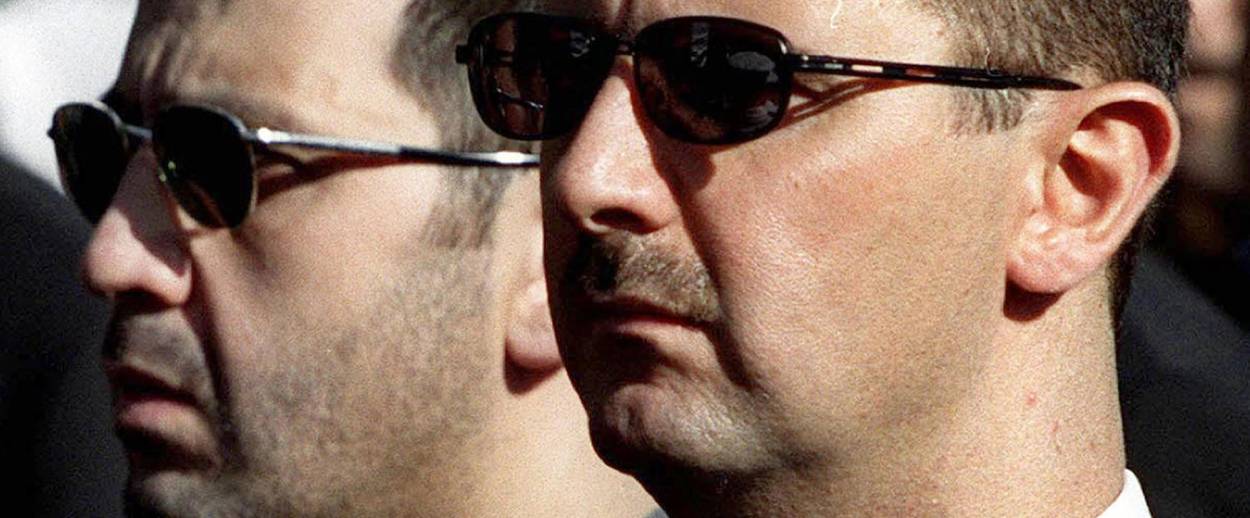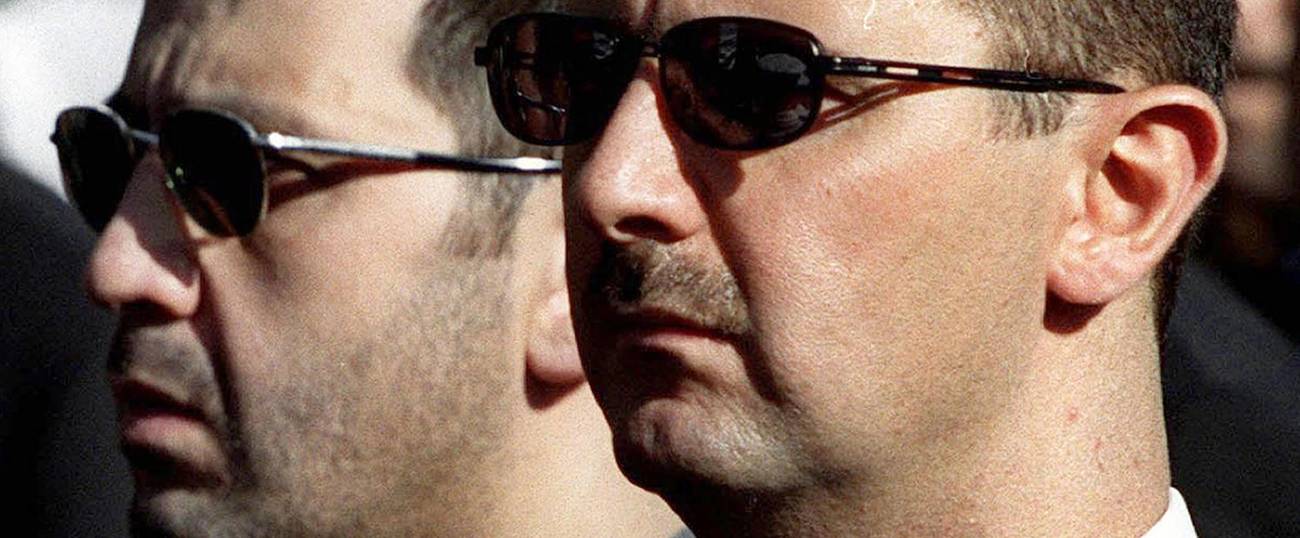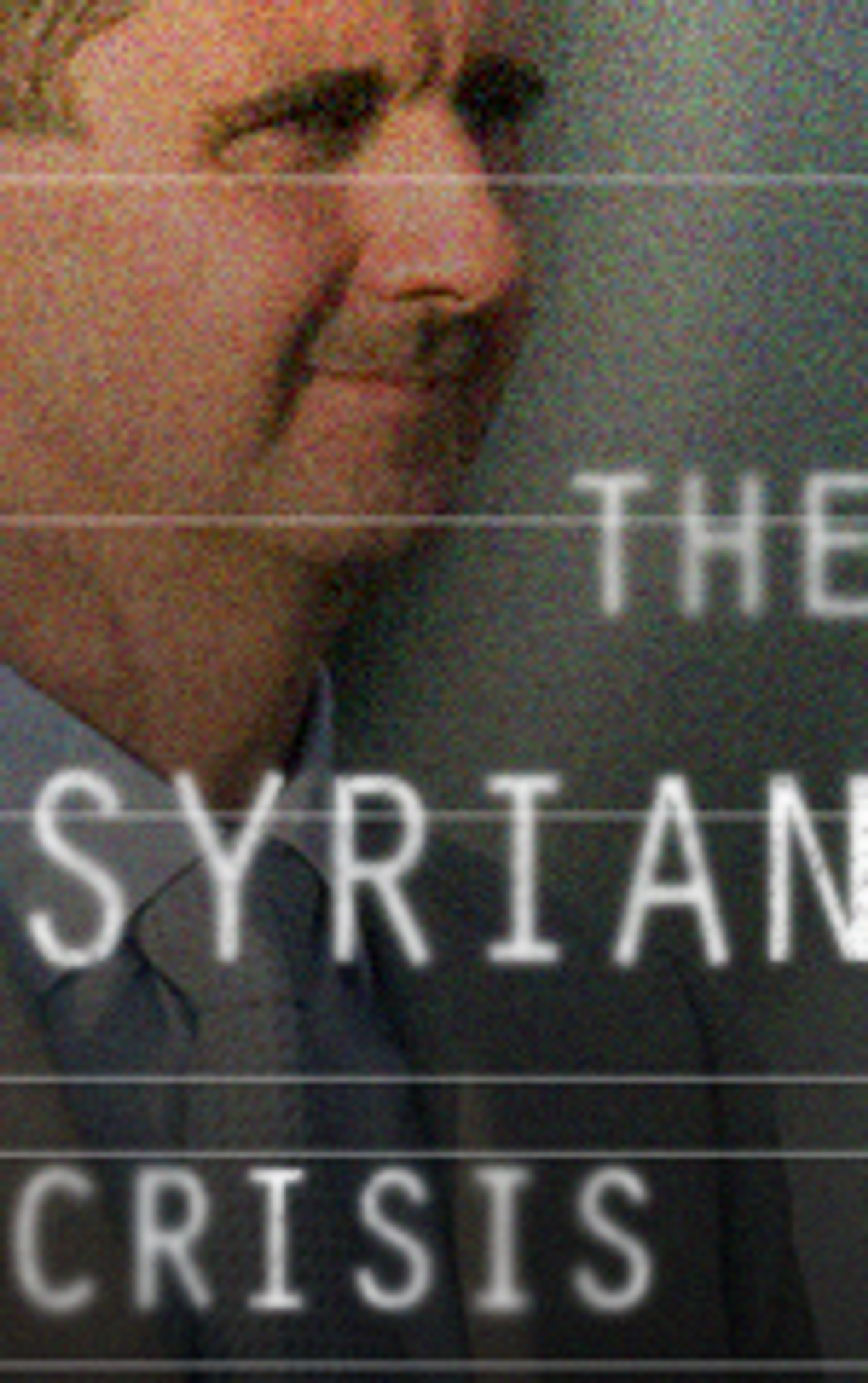The New Danger to Europe Isn’t ISIS. It’s Assad’s Thugs.
Are suspected war criminals, forged in the crucible of Syrian bloodshed, heading West as ‘refugees’?




Since 2015 more than a million refugees have crossed into Europe; several hundred thousand are Syrians fleeing a government-sponsored program of ethnic cleansing that is organized and directed in part by Iranian commanders on the ground and supported by Russian air power and heavy artillery. The large numbers of Syrians fleeing this horror have provoked all manner of responses, from the right-wing Pegida demanding an end to the influx of migrants, to some expressing concern that Da’esh (ISIS) fighters will sneak into Europe.
Syrians guilty of war crimes are indeed inside Europe right now. Some are associated with Da’esh. In December Finland arrested two brothers for appearing in a video in which Shia Iraqi conscripts were slaughtered. In January a Moroccan (not a refugee) attacked Paris police. In 2015, an FSA member was jailed in Sweden for beating a captive.
Yet the panic-mongering narrative about Da’esh fighters being sent to infiltrate Europe to carry out terror attacks, like the coordinated attacks in Paris in November of last year, has no demonstrable basis in reality. As the refugee crisis escalated, I started going through social media accounts to seek out information on suspects. I also pored over Arabic websites, Facebook pages, and exchanged information with Syrians.

What I found was that the overwhelming majority of Syrian refugees certainly posed no national security threat. But there was a disturbing trend. Possibly as many as 1,000 pro-Assad fighters implicated in war crimes have taken advantage of generous asylum offers.
Known as shabiha (ghosts), the fighters I found in Europe were hired by Assad’s brother Maher to repress protests that erupted in 2011. Incarcerated criminals were recruited, as were locals from minorities perceived as loyal (especially Alawites and Christians). The shabiha became notorious for some of the worst war crimes as protests ballooned into civil war, notably the Baniyas and Darayya massacres (shabiha led by Mihrac Ural even discussed “cleansing” Baniyas on video). Huge cash sums and even steroids were offered in return for their loyalty. As the war went on, shabiha became a term to describe Assad loyalists in every armed group. Now, after five years of killing, the very men who caused so many to flee are cashing in on the crisis to come to Europe.
At this point people may ask why these men are any more dangerous than Da’esh? The answer is that European governments have identified Da’esh, and not the Assad regime, as their enemy. They are on the lookout for Da’esh members, who more often than not are thwarted soon after entering European states. They’re less threatening simply because they aren’t given the chance to be a threat. Like shabiha, Da’eshis idiotically plaster their faces all over the Internet, relishing in committing horrific acts in public. But since they’re actively sought out, they can be quickly neutralized before they can do damage.
Shabiha, on the other hand, are largely invisible. For this we have ourselves to blame. Europeans are obsessed with finding outwardly devout, scary-looking “Islamist” bogeymen hiding among crowds of bedraggled refugees (or worse, identifying the latter as the former). Shabiha generally aren’t religious; they dress in plain clothes, drink and smoke, and love taking vainglorious selfies and partying. Euro-bigots are looking for the opposite. Since the scrutiny is on Muslim-looking Muslims (especially refugees) they’re also not as convenient to vilify or hate. Would the Daily Mail sell as many papers if they were to focus on genuine criminals who didn’t look outwardly Muslim? The simple answer is no. Fear of the Muslim other sells. And now that the West has identified fighting Da’esh and preserving Syrian regime structures as its primary goals in the region, low-minded bigotry and high-governmental policy aims have found a perfect meeting place—one that also provides a safe haven for war criminals.
Worse, some of the shabiha I have identified bear the hallmarks of having been sent by Syrian regime intelligence (the dreaded Mukhabarat) to Europe to spy on actual refugees or to commit acts of terrorism. It has to be remembered that in 2011 the regime threatened to attack Europe, using civilian loyalists as proxies. Using my website, I created an archive of pro-regime fighters I located over social media. Here are some of the people I found:
Layth Ayman Munshdi: According to his own (since deleted) social media, Layth is a Lebanese-Iraqi who lived in Damascus. He joined one of the many Iraqi Shi’a jihadist groups that came into Syria to fight for the regime; possibly Abu al-Fadl al-Abbas (more “jihadists” fight for the regime than against it).
Layth uploaded several photographs to his Facebook profile. In one, he stands in what could be a detention facility with his rifle. Corpses of freshly killed men are scattered around his feet. In others he stands over more. His uniform carries the Shi’a slogan “We’re here for you, Zainab,” used to justify fighting Sunnis (Iranian propaganda claims they would destroy the shrine of Zainab, revered by Shi’ites). On Twitter, he wears Hezbollah’s uniform.
In 2015 Layth posted photographs in the Greek islands. Later he changed his location to Neustadt (Bremen, Germany), claiming on social media to be a “Syrian” refugee—odd, considering the fact that neither of his parents are Syrian. After his account was uncovered, Layth closed it. A notorious Hezbollah fighter in Europe is unsettling. Hezbollah has bombed civilian targets in Europe before; might men like Layth have as few reservations about killing Europeans as Da’esh?
Mohammad Kanaan: Kanaan served around Damascus. Friendly with Assad, he once met him in person, as depicted in a January 2015 propaganda video shot in Jobar. Activists online claim Kanaan tortured prisoners, robbed and killed at checkpoints, and sold stolen cars. He fought in several key battles, including around Ghouta. In these battles Assad’s army encircled various cities (including Madaya) preventing any food reaching the inhabitants under the “kneel or starve” policy.
In 2015 Kanaan turned up in Sweden, allegedly funding his trip with the proceeds. Syrians shared his photos; Kanaan claimed on his Facebook account that they’re “scum” he has to “deal with.”
Mohammed al-Abdullah: Aka Abu al-Haydriin, al-Abdullah isn’t your usual thug; his uniform as it appeared in social media implies an elite unit, possibly affiliated with the special forces. He uploaded photographs onto his now-closed Facebook account from the front lines, including images of himself trampling bodies of men in civilian dress. By 2015 he was in Sweden (near Vallingby, judging from a notice board featured in one of the social-media photographs attributed to him) as a “refugee.” What is a highly trained member of Assad’s forces doing in Europe?
Activists from mujremon.com (an Arabic website that claims to expose regime war criminals) claimed that Al-Abdullah was notorious for dismembering victims. Such atrocities weren’t pioneered by Da’esh; Assad’s forces were beheading and mutilating before Da’esh arrived. Al-Abdullah allegedly extorts refugees with threats to their families.
Houssam Alsatouf: Alsatouf is a member of Assad’s secret police, namely the Air Force Intelligence in Aleppo. A capable agent highly trusted by the regime; once he seemingly worked with Assad’s ambassador to the United Nations, Bashar Jaafari, pictured with him on his Facebook account.
Activists on the “Criminals, Not Refugees” Facebook group claimed Houssam was sent to Moscow to be trained as a skilled bomb-maker. In one of his Facebook photos he poses in his uniform with a Russian military certificate on his wall. Activists at mujremon.com added more, claiming Alsatouf applied for asylum in Germany. However, to get there he apparently flew from regime-controlled Damascus to Russia, several thousand miles off the refugee route, before apparently settling in Hamburg. Syrians have speculated that he was sent to stage attacks that will be blamed on refugees. Shouldn’t a possible bomb-maker flying into Europe require closer attention, as should photographs depicting him appearing at the Russian embassy and at demonstrations carrying Hezbollah iconography?
Sabri Kaku: Kaku recently arrived in the Netherlands from Aleppo as a refugee. However social media posts have questioned this, claiming without confirmation that Kaku was notorious around Aleppo as one of the first people to join the early shabiha gangs, initially sent out with knives, guns, and clubs to attack demonstrators.
In one photograph of shabiha gathering to charge at demonstrators, Kaku carries a club. In another he poses in the gym, an apparent steroid user. Kaku was likely part of a shabiha group led by Hamdi Mardli (alias Abu Salmo) who was identified as a notorious militia member on anti-regime social media and video footage as far back as 2012—and later killed in 2013. Kaku may have operated in the Sheikh Maksoud neighborhood of Aleppo, in the regime’s political security branch.
Alaa Adel Khalil: Khalil is yet another member of an elite regime unit. From Qamishli and originally a boxer, he volunteered for the regime’s “Popular Committees” (the official name for the shabiha). Khalil’s service seems to have impressed his superiors, because he was placed in the Syrian Special Forces (a force composed of elite regime loyalists). He was promoted rapidly; by 2012 he was serving as Assad’s bodyguard, notably as he gave a speech in Umayyad Square. Khalil was also linked to the Republican Guard, the almost-exclusively Alawite force tasked with protecting Assad. Khalil is accused by anti-regime activists on mujremon.com of being behind a slaughter of civilian prisoners at a checkpoint.
Khalil arrived in Germany in late-2014 as a “student” who had fled the war. However his several Facebook profiles (“Alaa Kh” and “Alaa Adel”) prove otherwise. A Syrian contact claims Alaa is currently living there, studying alongside them in Sparaachen Akademie. Khalil allegedly bragged of his service when confronted by my contact’s father, including of being trained as a sniper in Russia.
***
It is hard to argue that shabiha killers don’t belong in prisons—not on the streets of Europe. If these men have no reservations about bludgeoning and shooting Syrians of all ages, attacking a European or two won’t cause them to lose sleep. What’s scarier is that many shabiha I have identified appear to have the Assad regime’s connections, money, and intelligence services behind them, making them likely tools for future acts of well-organized violence that serve the ends of the Syrian state or its allies.
The shabiha are already committing crimes in their new home. Falafel Beirut Scham (a Lebanese restaurant in Berlin) was looted for hoisting the Syrian flag. The perpetrators defaced the flag and wrote “Souria al-Assad” on the walls—Assad’s Syria. Death threats were also scrawled. Some continue to terrorize their countrymen and reportedly deal drugs.
Da’esh is undoubtedly a danger. But the majority of the credible threats that the West faces now can be indisputably traced back to the Assad regime, not to its opponents. Do we really feel safe, knowing that men hired to torture, kill, and rape are freely walking Europe’s streets?
***
You can help support Tablet’s unique brand of Jewish journalism. Click here to donate today.
Ben Davies is a journalist and analyst, with a focus on the Middle East and war criminals attempting to escape to Europe. He filmed a documentary in Syria in 2013.